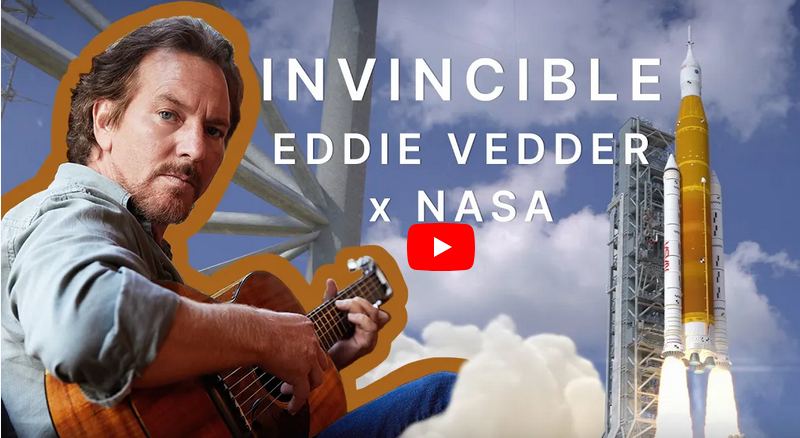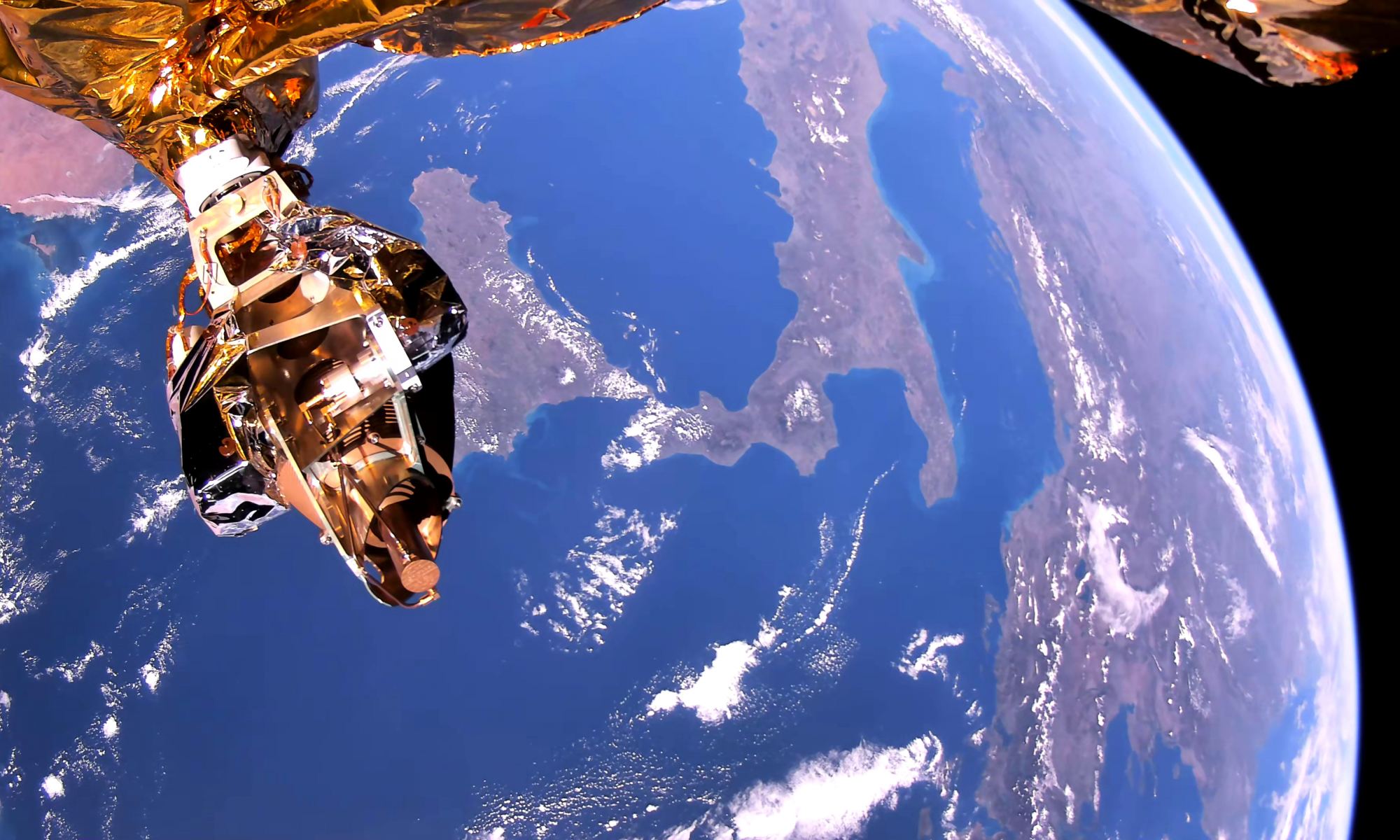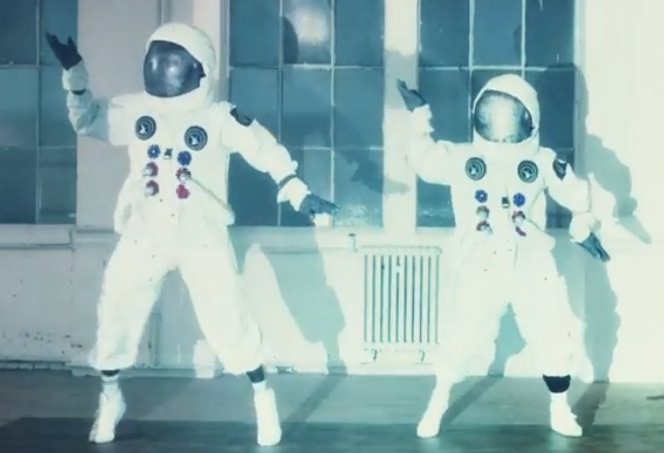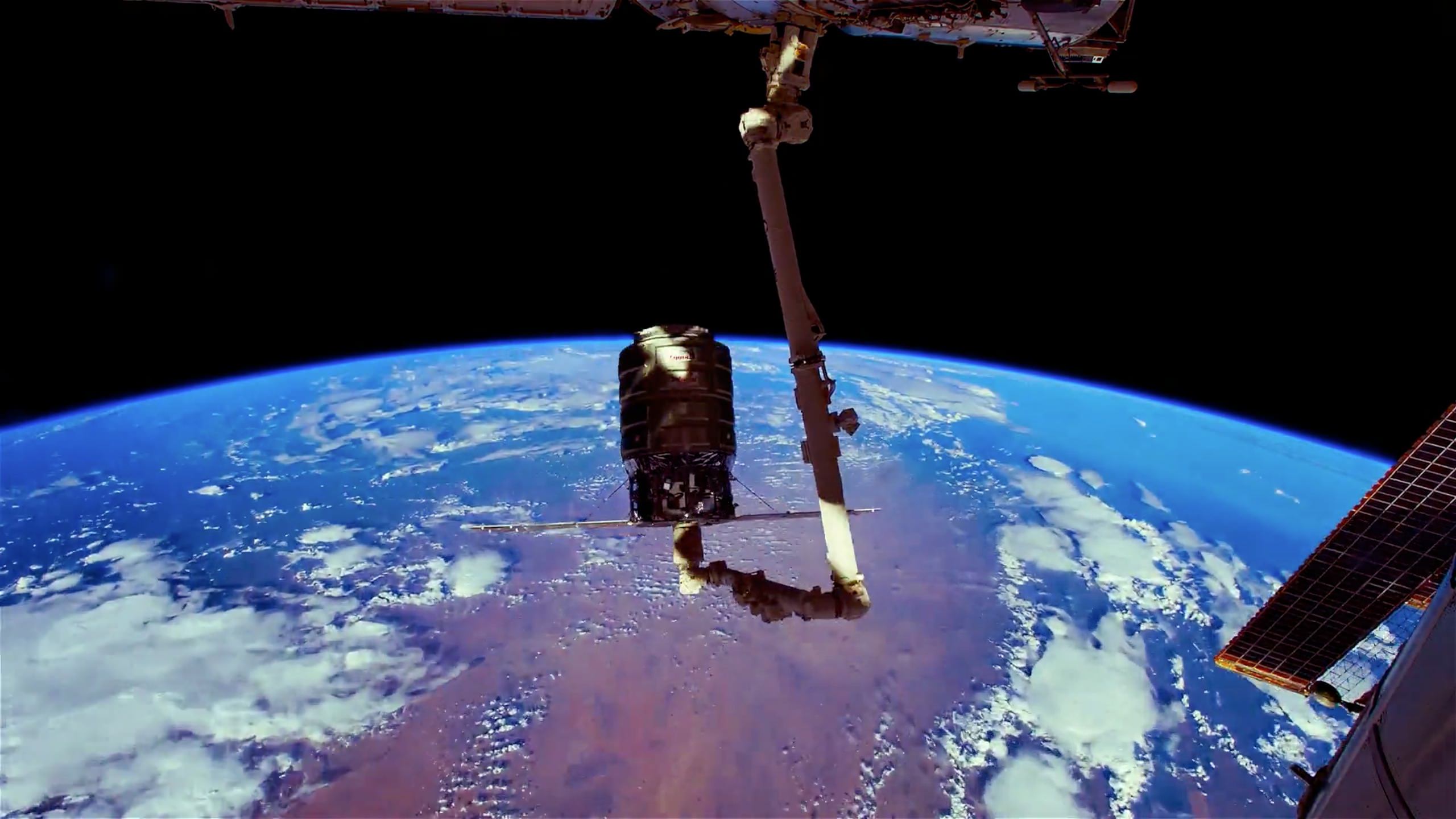For fans of Eddie Vedder, Pearl Jam, and space exploration, this video will require very little explanation. But just in case some people haven’t seen it yet, this musical performance was a tribute to the long-awaited roll-out of the fully-stacked Space Launch System (SLS) at the NASA Kennedy Space Center in Florida. It’s guaranteed to give you goosebumps and maybe even bring a tear to your eye!
Continue reading “Pearl Jam's Eddie Vedder Provides the Music for NASA's new SLS Video”Watch Perseverance Land on Mars. Mind…Blown
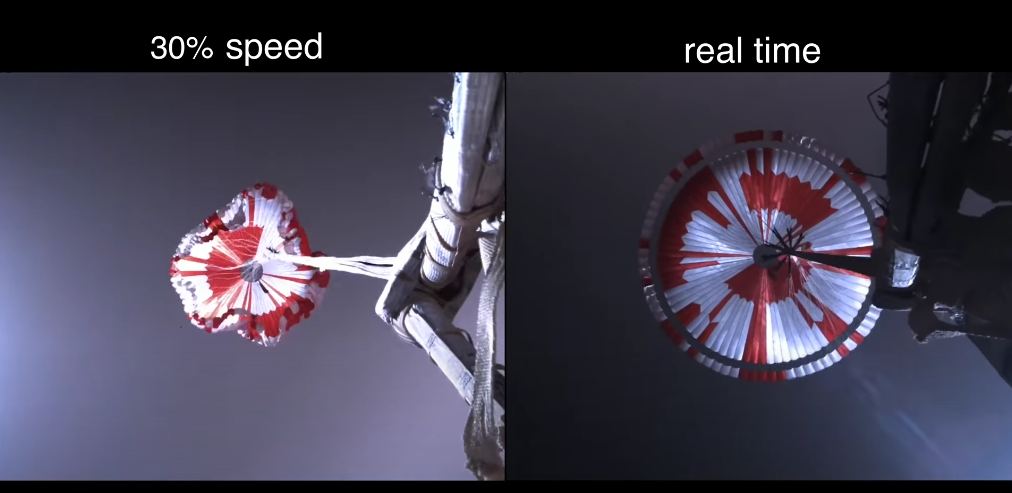
NASA’s Perseverance rover is practically bristling with cameras. And those cameras were busy during the rover’s breathtaking descent to the Martian surface. Now NASA has released images and videos of the blessed event.
Continue reading “Watch Perseverance Land on Mars. Mind…Blown”Sen has Launched a 4K Video Stream to Space
In 2014, British entrepreneur Charles Black founded the company Sen (an acronym for Space Exploration Network) with the vision of “democratizing space”. Behind this vision was Black’s desire to create the world’s first 4K video streaming platform that could send video from space to billions of people worldwide. The purpose of this is to educate the public on our ever-changing world and our growing presence in space.
The key to this ambitious goal is the creation of a constellation of small satellites that will provide real-time video from Low Earth Orbit (LEO). The company recently took a major step towards making that happen by using their recently-deployed satellite to gather footage of Earth and space from orbit. This effectively demonstrated the capabilities of their platform and may represent a new step in NewSpace.
Continue reading “Sen has Launched a 4K Video Stream to Space”Incredible Descent Video of the Chinese Lander to the Lunar Far Side
On January 2nd, 2019, China’s Chang’e-4 lander made a successful landing on the far side of the Moon. The China National Space Administration (CNSA) and the Chinese Lunar Exploration Program (CLEP) report that after 9 days on the surface, the mission is in good shape. The Yutu-2 rover has been deployed and has begun exploring the Von Karman crater.
CNSA has released some video of the mission, including a video of Chang’e-4’s historic descent. Thanks to the hard-working people at the Planetary Society, and to Andrew Jones who reports on the Chinese Space Program, we have a handful of new videos and images of the Chang’e-4’s mission to enjoy.
Continue reading “Incredible Descent Video of the Chinese Lander to the Lunar Far Side”Being Cassini. Experience What It Was Like to Fly Past Jupiter and Saturn and Their Moons
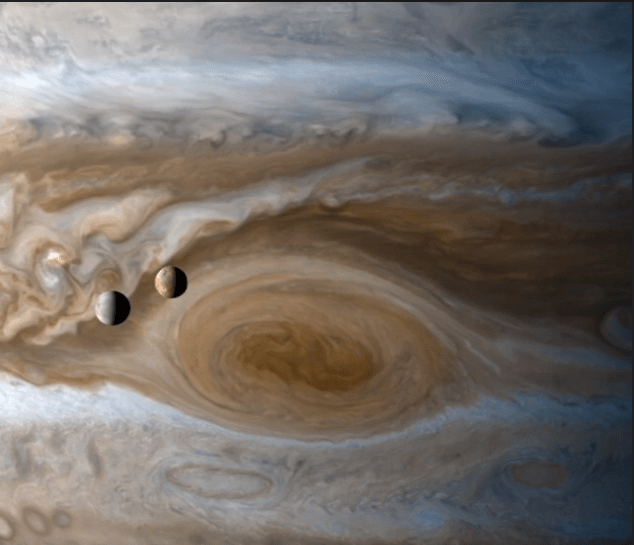
What would it be like to be onboard the Cassini orbiter as it made its way around Jupiter and Saturn and their moons? Pretty cool. Now a new video made from Cassini images pieces together parts of that stately journey.
This is a Scale Model of the Solar System Like You’ve Never Seen Before

We’ve all seen illustrations of the Solar System. They’re in our school textbooks, on posters, on websites, on t-shirts… in some cases they’re used to represent the word “science” itself (and for good reason.) But, for the most part, they’re all wrong. At least where scale is concerned.
Sure, you can show the Sun and planets in relative size to each other accurately. But then the actual distances between them will probably be way off.* And OK, you can outline the planets’ concentric orbits around the Sun to scale pretty easily. But then there’s no convenient way to make sure that the planets themselves would actually be visible. In order to achieve both, you have to leave the realm of convenience behind entirely and make a physical model that, were you to start with an Earth the size of a marble, would stretch for several miles (and that’s not even taking Pluto into consideration.)
This is exactly what filmmaker Wylie Overstreet and four of his friends did in 2014, spending a day and a half on a dry lake bed in Nevada where they measured out and set up a scale model of the Sun and planets (not including Pluto, don’t tell Alan Stern) including their respective circular orbits. They then shot time-lapse images of their illuminated cars driving around the orbits. The resulting video is educational, mesmerizing, beautiful, and overall a wonderful demonstration of the staggering scale of space in the Solar System.
Watch the video below:
Or watch full-screen on Vimeo here.
For some reason whenever I think about the sheer amount of space there actually is in space, it gets me a like choked up. These guys get an “A+” for effort, execution, and entertainment!
Credit: Wylie Overstreet and Alex Gorosh
*There have been a few web pages that have been able to show the scale sizes and distances of the planets (and there are even some driving-distance ones too) but often they oversimplify by lining the planets up in a row — which doesn’t happen all that often and doesn’t portray the orbital circumferences either. This all just happens to be a favorite contemplating point of mine.
Ceres Resembles Saturn’s Icy Moons
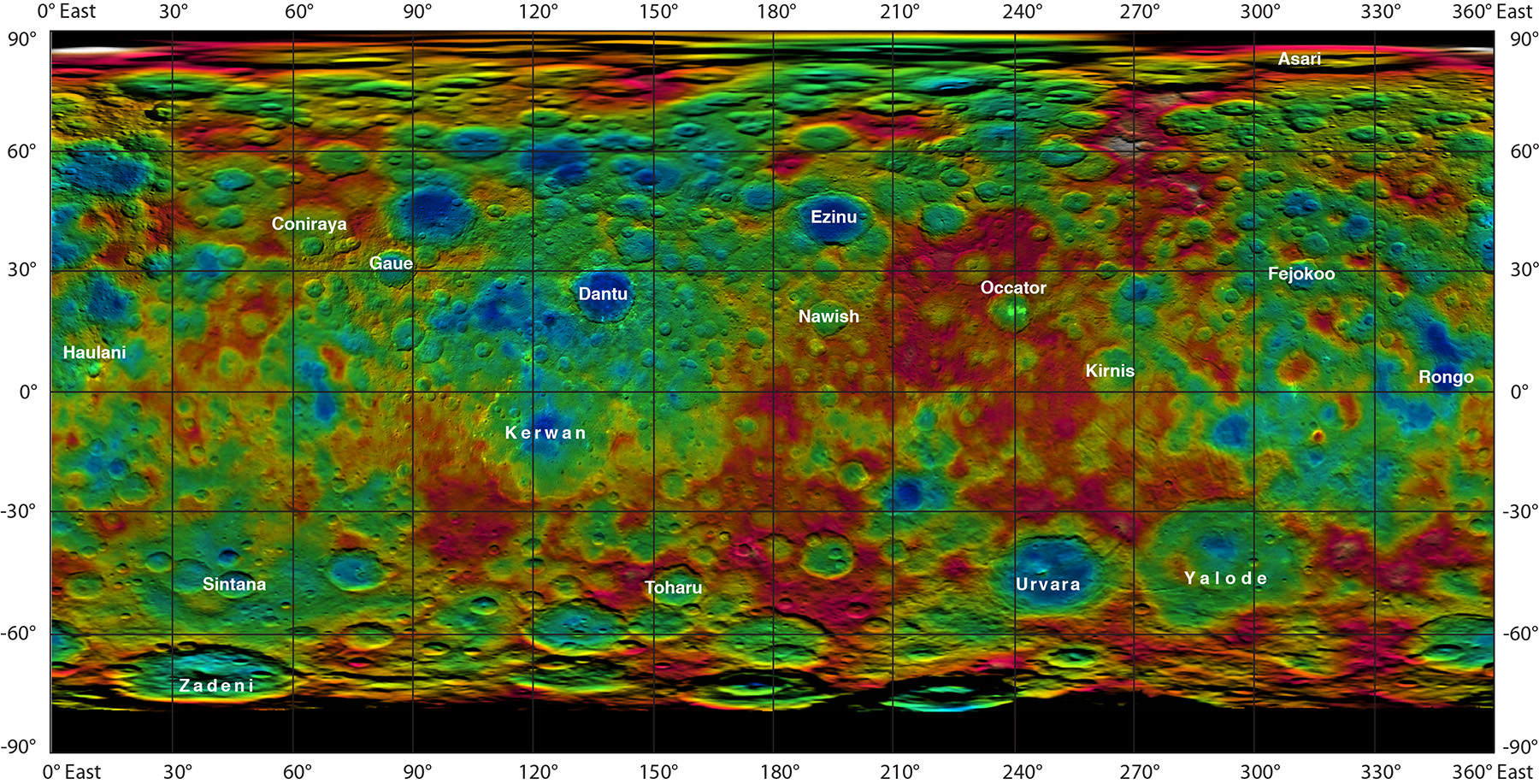
Ceres’ topography is revealed in full (but false) color in a new map created from elevation data gathered by NASA’s Dawn spacecraft, now nearly five months in orbit around the dwarf planet orbiting the Sun within the main asteroid belt.
With craters 3.7 miles (6 km) deep and mountains rising about the same distance from its surface, Ceres bears a resemblance to some of Saturn’s frozen moons.
“The craters we find on Ceres, in terms of their depth and diameter, are very similar to what we see on Dione and Tethys, two icy satellites of Saturn that are about the same size and density as Ceres,” said Paul Schenk, Dawn science team member and a geologist at the Lunar and Planetary Institute (LPI) in Houston, TX. “The features are pretty consistent with an ice-rich crust.”
Check out a rotation video of Ceres’ topography below:
In addition to elevation mapping Ceres has also had some of its more prominent craters named. No longer just “bright spot crater” and “Spot 1,” these ancient impact scars now have official IAU monikers… from the Roman Occator to the Hawaiian Haulani to the Hopi Kerwan, craters on Ceres are named after agriculture-related gods and goddesses of mythologies from around the world.
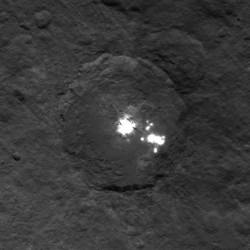
See a full list of Ceres’ named features here.
Dawn is currently moving closer toward Ceres into its third mapping orbit. By mid-August it will be 900 miles (1448 km) above Ceres’ surface and will proceed with acquiring data from this lower altitude, three times closer than it has been previously.
At 584 miles (940 km) in diameter Ceres is about 40 percent the size of Pluto.
NASA’s Dawn spacecraft is the first to successfully enter orbit around two different mission targets and the first to orbit a dwarf planet. Its first target was the asteroid Vesta, which it orbited from July 2011 to September 2012. Dawn arrived in orbit at Ceres on March 6, 2015 and there it will remain during its primary science phase and beyond; Ceres is now Dawn’s permanent home.
Learn more about the Dawn mission here and find out where Dawn and Ceres are now here.
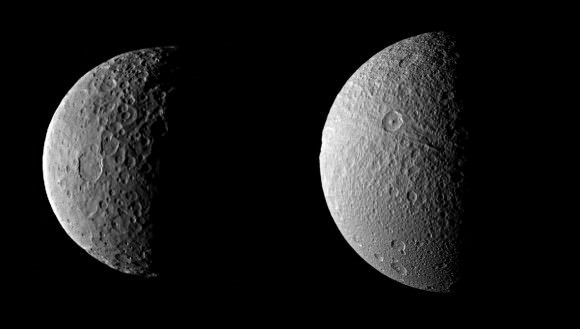
Source: NASA
This Is The Asteroid That Didn’t Hit Us
All right, sure – there are a lot of asteroids that don’t hit us. And of course quite a few that do… Earth is impacted by around 100 tons of space debris every day (although that oft-stated estimate is still being researched.) But on March 10, 2015, a 12–28 meter asteroid dubbed 2015 ET cosmically “just missed us,” zipping past Earth at 0.3 lunar distances – 115,200 kilometers, or 71, 580 miles.*
The video above shows the passage of 2015 ET across the sky on the night of March 11–12, tracked on camera from the Crni Vrh Observatory in Slovenia. It’s a time-lapse video (the time is noted along the bottom) so the effect is really neat to watch the asteroid “racing along” in front of the stars… but then, it was traveling a relative 12.4 km/second!
UPDATE 3/14: As it turns out the object in the video above is not 2015 ET; it is a still-undesignated NEO. (My original source had noted this incorrectly as well.) Regardless, it was an almost equally close pass not 24 hours after 2015 ET’s! Double tap. (ht to Gerald in the comments.) UPDATE #2: The designation for the object above is now 2015 EO6.
Yuri Gagarin Memorialized in a Funky Music Video
On April 12, 1961, Soviet cosmonaut Yuri Gagarin entered the “realm of myth and legend” when he became the first human in space and the first person to orbit the Earth. Now, over 53 years later, Gagarin is memorialized with (among many things) a superhero-esque statue in Moscow, yearly Yuri’s Night celebrations held around the world, a launch pad at Baikonur Cosmodrome…and this music video for a hip new tune titled “Gagarin.”
Oh kids these days.
Created by the two-person London-based band PUBLIC SERVICE BROADCASTING “Gagarin” is the first single released off their new album “The Race for Space.” The music and video, which uses newly-available footage from the Soviet space program, is a “brassy, funk-heavy superhero theme song for the most famous man in the world at the time” and “reveals a new side to the band – not least their considerable dancing skills.”
PSB creator J. Willgoose, Esq. explains the rationale behind the song:
“We didn’t want to be too literal in our interpretation of the material we were given – material that was full of heroic language and a sense of exuberance, with lines like ‘the hero who blazed the trail to the stars’, and ‘the whole world knew him and loved him’. It seemed more appropriate to try and re-create some of that triumphant air with a similarly upbeat song – and when it came to creating the video, the best way we could think of to communicate that sense of joy was to get our dancing shoes on.”
As a fan of Yuri, spaceflight, and brass-band breakdancers in astronaut suits, I give this video two Vostoks up.
You can pre-order PSB’s newest album here, and follow them on Twitter and Facebook, and YouTube.
Video © PUBLIC SERVICE BROADCASTING. HT to Xeni Jardin at BoingBoing.
See What Astronauts See In This Stunning ISS Timelapse
Yes, it’s another time-lapse video made from photos taken by astronauts aboard the ISS. Yes, it’s been digitally remastered, smoothed-over, and set to a dramatic technopop soundtrack. But no, it’s still not boring because our planet is beautiful and spaceflight is and always will be absolutely fascinating.
There. I said it.
The video above “Astronaut – a Journey to Space” is everything that I just mentioned and was compiled and edited by photographer and video artist Guillaume Juin. The original images were gathered from Johnson Space Center’s Gateway to Astronaut Photography of Earth site, and were captured during ISS missions from 2011 to 2014. Aforementioned dramatic technopop music is by Vincent Tone. Watch it above, or for maximum impact watch it full-screen. (I strongly advise the latter.) Enjoy!
HT to Sploid and fellow EFT-1 NASA Social participant Ailyn Marie for bringing this to my attention.

